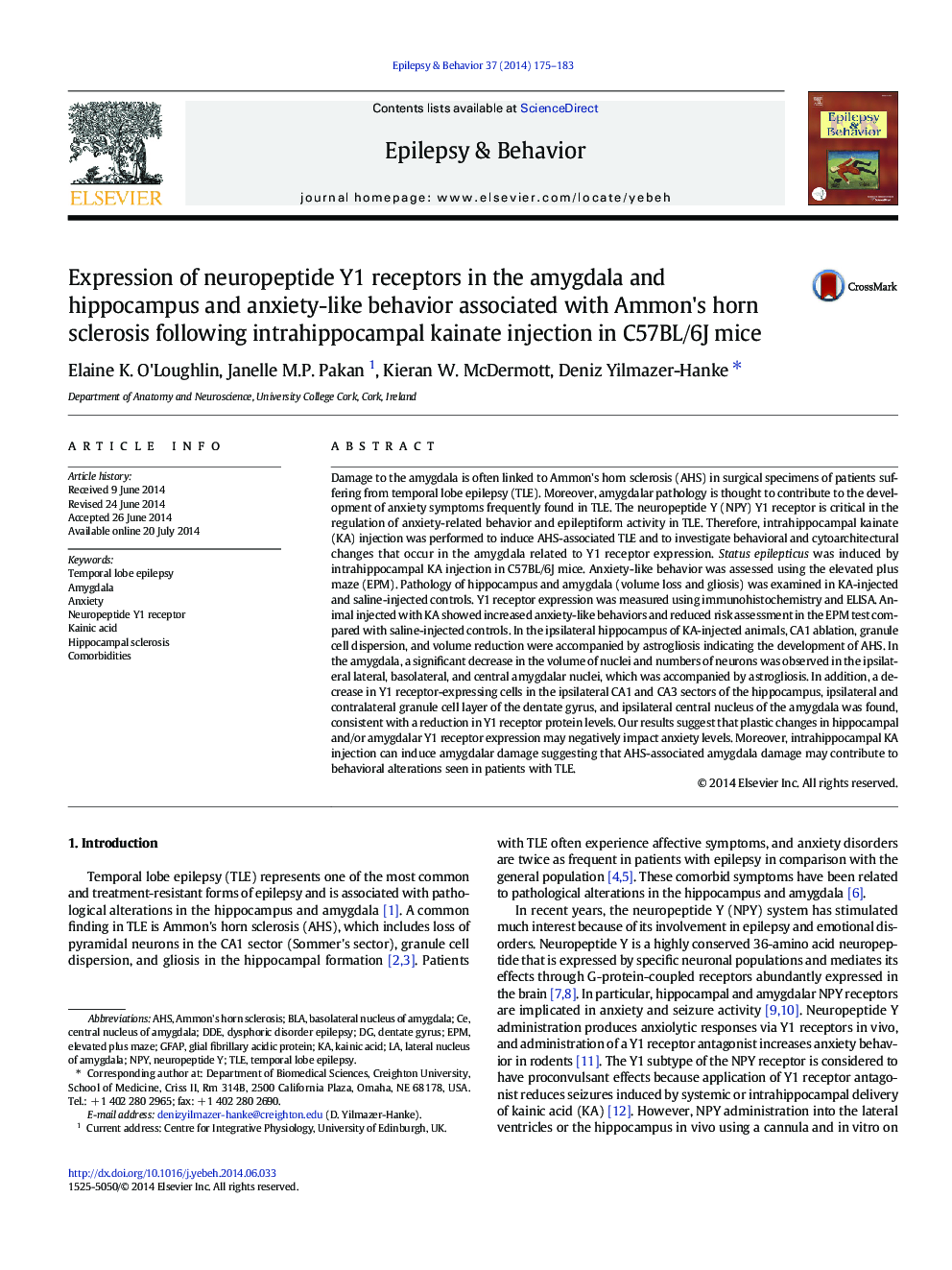| Article ID | Journal | Published Year | Pages | File Type |
|---|---|---|---|---|
| 6012147 | Epilepsy & Behavior | 2014 | 9 Pages |
â¢Intrahippocampal kainate injection mimics limbic epilepsy with hippocampal sclerosis.â¢Intrahippocampal kainate injection induces enhanced anxiety and defensive behaviors.â¢Hippocampal and amygdalar volume loss occurs after intrahippocampal kainate injection.â¢Intrahippocampal kainate injection leads to cell loss in specific amygdalar nuclei.â¢Neuropeptide Y1 receptors are decreased in the central amygdala in hippocampal sclerosis.
Damage to the amygdala is often linked to Ammon's horn sclerosis (AHS) in surgical specimens of patients suffering from temporal lobe epilepsy (TLE). Moreover, amygdalar pathology is thought to contribute to the development of anxiety symptoms frequently found in TLE. The neuropeptide Y (NPY) Y1 receptor is critical in the regulation of anxiety-related behavior and epileptiform activity in TLE. Therefore, intrahippocampal kainate (KA) injection was performed to induce AHS-associated TLE and to investigate behavioral and cytoarchitectural changes that occur in the amygdala related to Y1 receptor expression. Status epilepticus was induced by intrahippocampal KA injection in C57BL/6J mice. Anxiety-like behavior was assessed using the elevated plus maze (EPM). Pathology of hippocampus and amygdala (volume loss and gliosis) was examined in KA-injected and saline-injected controls. Y1 receptor expression was measured using immunohistochemistry and ELISA. Animal injected with KA showed increased anxiety-like behaviors and reduced risk assessment in the EPM test compared with saline-injected controls. In the ipsilateral hippocampus of KA-injected animals, CA1 ablation, granule cell dispersion, and volume reduction were accompanied by astrogliosis indicating the development of AHS. In the amygdala, a significant decrease in the volume of nuclei and numbers of neurons was observed in the ipsilateral lateral, basolateral, and central amygdalar nuclei, which was accompanied by astrogliosis. In addition, a decrease in Y1 receptor-expressing cells in the ipsilateral CA1 and CA3 sectors of the hippocampus, ipsilateral and contralateral granule cell layer of the dentate gyrus, and ipsilateral central nucleus of the amygdala was found, consistent with a reduction in Y1 receptor protein levels. Our results suggest that plastic changes in hippocampal and/or amygdalar Y1 receptor expression may negatively impact anxiety levels. Moreover, intrahippocampal KA injection can induce amygdalar damage suggesting that AHS-associated amygdala damage may contribute to behavioral alterations seen in patients with TLE.
